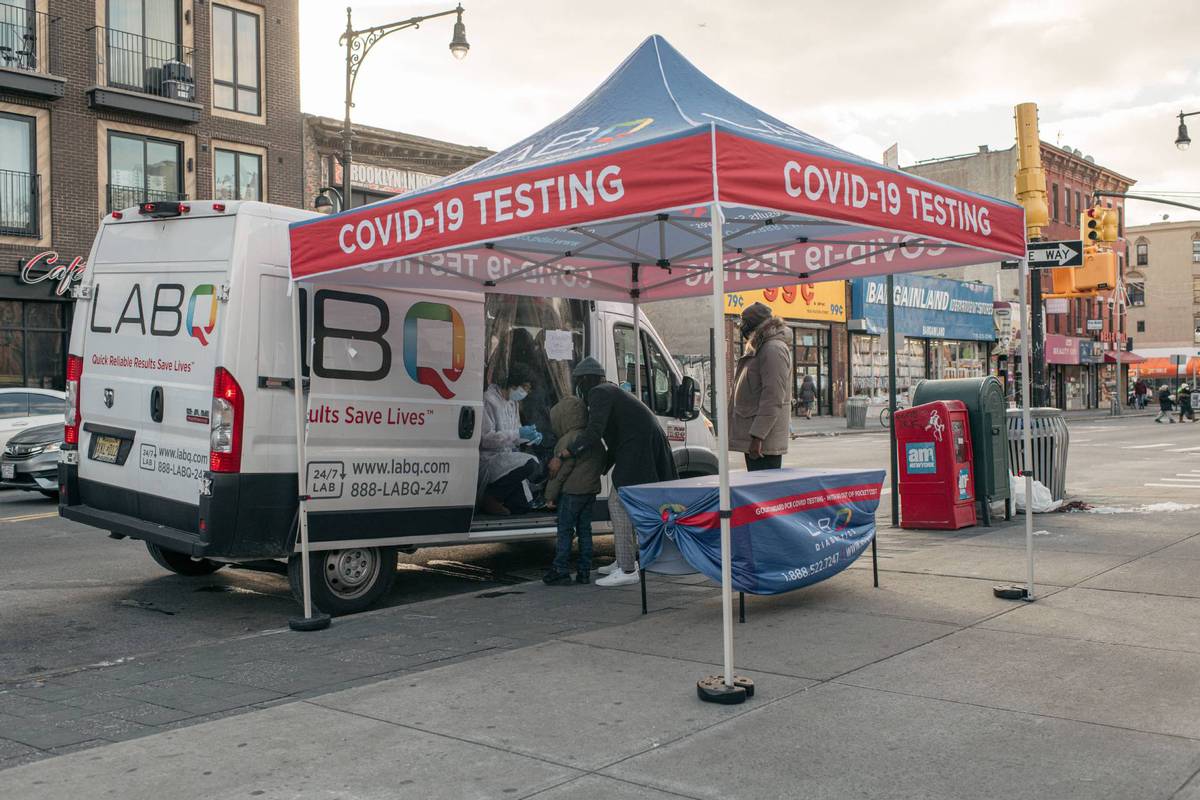2 Omicron coronavirus subvariants found in NY state


Two new subvariants of the Omicron variant that are estimated to be more contagious have been detected in New York state and have caused rising infections in the past few weeks, according to the state Health Department.
The two subvariants, BA.2.12 and BA.2.12.1, appear to spread rapidly, with a growth advantage of about 23 percent to 27 percent over BA.2, which was more contagious than any previous variant and now accounts for more than 80 percent of new infections in the state, the Health Department said in a press release on Wednesday.
The new viruses don't appear to cause more severe disease than previous variants, the officials said, but they may explain why New York has been the national hot spot for coronavirus cases in the past few weeks.
The subvariants are spreading particularly fast in the state's central region, where they accounted for more than 70 percent of new cases in March and above 90 percent in April, officials said. In the Finger Lakes region, 20 percent of new cases this month were attributable to BA.2.12 and BA.2.12.1
"It's just a reminder that we're not out of the woods with regard to this virus, and people should continue to take precautions and to get fully vaccinated if they haven't completed their course," Kirsten St. George, a virologist for the state, told The New York Times.
She said that the new subvariants have been detected in more than 40 other countries and more than 30 states, but New York is the first state to report significant community spread from the newly identified subvariants.
In New York City, the seven-day average of confirmed positive cases stands at 2,069, according to city Health Department data as of Thursday, an increase from the 28-day average of 1,484. However, the alert level citywide is currently "low".
It is still unclear whether the subvariants spread more quickly because they are more contagious, or they are able to dodge the body's immune defenses. The Times reported that one of the new subvariants has a mutation that has been shown to help dodge immunity.
Meanwhile, Pfizer-BioNTech said on Thursday that it intends to request authorization from the Food and Drug Administration in the coming days for a booster for children ages 5 to 10.
The companies said that a booster dose of its COVID-19 vaccine raised antibody levels in school-age children, against the original version of the virus and the Omicron variant in a small trial of children aged 5 to 11. In a study, Pfizer and BioNTech gave 140 children a third dose six months after they received their second shot.
The additional shot, given six months after children were fully vaccinated, led to a sixfold increase in antibodies against the original strain of the coronavirus, Pfizer said. The data haven't yet been peer-reviewed.
If the companies' claims of a strong immune response are confirmed by federal regulators, the government could broaden eligibility for booster doses to include 28 million more children.
Pfizer's COVID-19 vaccine for children ages 5 to 11 comes with 10 micrograms, a smaller dose than its vaccine for people ages 12 and up, which is 30 micrograms. The booster shot is also 10 micrograms.
According to data from the Centers for Disease Control and Prevention (CDC), only 28 percent of children in this age group are fully vaccinated.
Americans 12 and older are eligible for at least one booster, and about 30 million people aged 50 or older are eligible for a second one.
A CDC study in March found that Pfizer's COVID-19 vaccine was only 46 percent effective at preventing emergency department and urgent care encounters in school-age children. The agency later reported that the two doses for children still protected strongly against severe outcomes of COVID-19, including hospitalization and death.
In February, researchers from the New York State Health Department found that protection against infection in children in the 5-to-11 age group wanes over time, with the vaccine's effectiveness falling to 12 percent in December and January, markedly less protective than for teens.
Still, the new clinal data presented in the company's news release "reinforce the potential function of a third dose of the vaccine in maintaining high levels of protection against the virus in this age group", the companies said in the statement, adding that the dose was "carefully selected based on safety, tolerability and immunogenicity data".































